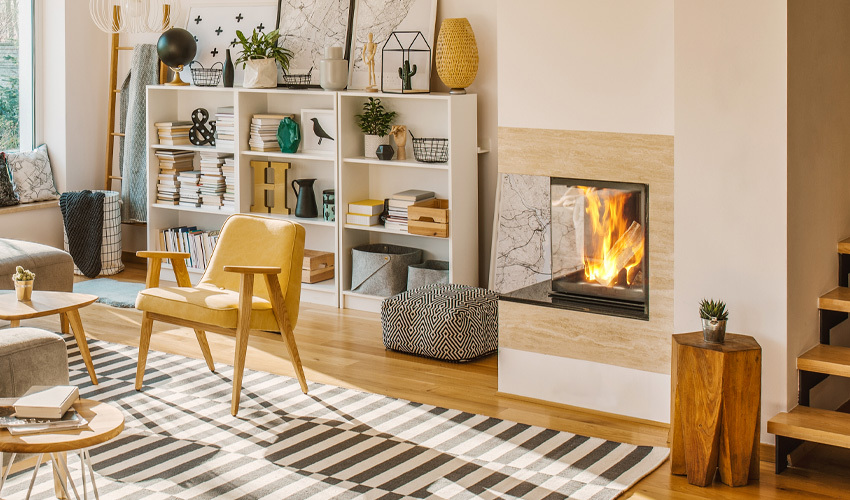
Fireplaces are often the centerpiece of the home; that’s just one reason to learn how to maintain your fireplace to keep it functional and safe. And, if you’re hoping to lower your energy bill this year, you can make sure your fireplace is working at peak efficiency by installing fireplace insulation. Read on to learn how to maximize the output of your fireplace and decrease cold drafts through the installation of insulation.
Fireplace Insulation: Where, Why and How to Insulate
A fireplace will warm a space when in use but may cause heat loss if not properly insulated. A fireplace that is not adequately insulated will allow drafts of cool, outdoor air into the home. Further, a poorly insulated fireplace will be less efficient at adding supplemental heat to your home. There are three key parts of a fireplace where heat is lost:
- the fireplace door
- the chimney
- the exterior wall
How to Insulate a Fireplace
- Insulating with a Chimney Liner
A chimney liner or flue lining is a conduit that runs from a fireplace firebox to the top of a chimney. Insulating your chimney liner helps to:
1) Prevent problematic heat transfer from hot masonry to dry home frames, in turn decreasing the risk of combustion.
2) Increase fireplace efficiency by funneling air in and out of a home.
3) Reduce creosote buildup in the fireplace, decreasing the risk of fire.
Chimney liner insulation comes in several different forms, including pour-in mixes, rigid wraps, and blanket.
Insulating a Fireplace Insert
A fireplace insert is a type of modern fireplace that can be installed without masonry. Manufactured with a fireproof box, fireplace inserts may be wood or pellet burning or may be powered by gas or electricity. A fireplace insert is generally more energy efficient than a traditional fireplace, but still requires insulation. Insulation should be tucked around all sides of the firebox and the flue.
Insulating a Fireplace Door
If you are concerned that the fireplace door might be leaking cold winter air or allowing smoke into your home, you can replace the seal on it. To replace the seal, remove the old gasket, vacuum the gasket channel to remove any debris, and follow the product instructions to install the new gasket. This job is much easier if you can take the door off the fireplace and lay it flat on a surface.
How Does the Damper Affect Drafts?
Want more ways to reduce drafts? When the fire is out, remember to close the damper. This will keep cold air from wafting into your home. Further, if you have a fireplace insert and a standard chimney masonry that vents outside the home, consider installing a damper block-off plate. A damper block-off plate fits into a chimney and reduces the amount of heat loss around the fireplace insert. Made of sheet metal, a damper block off plate should fit snugly within the chimney and allow the flue liner to pass through.
Keep Your Home Warm with Help from Aire Serv
Insulating your fireplace is just one step you can take to increase your home’s energy efficiency and stay warm this winter. For help keeping your home warm via your HVAC system, choose Aire Serv®. Schedule an appointment online for HVAC maintenance, repair, or replacement or call (855) 512-2886 for 24/7 emergency HVAC service.

